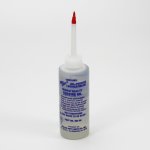AwkwardPotato
Well-known member
I've been looking over the display in my new 1400c and have been researching some possible ways to fix it. Here's what I've found so far:
- Hinges are attached to the back display bezel via 3 brass standoffs just like the infamous ones found in the PB 100 series
- For each hinge, there is one standoff in the curved part of the bottom of the bezel, and two right under the LCD panel, which are covered by a part of the metal backing
- Both of the standoffs in the curved part had completely disintegrated on my unit. Parts of metal backing covering other standoffs had detached due to metal fatigue, remaining standoffs look undamaged
- Huge cracks in the back of the bezel (of course), might attempt plastic welding or may just use epoxy
- Each hinge has only one small clutch, which has an exposed area that looks *just* wide enough to apply some lubricant and work it into the hinge
These are just some preliminary notes for now; I'm going to hold off on repairing it until I have an appropriate lubricant. Any suggestions?
- Hinges are attached to the back display bezel via 3 brass standoffs just like the infamous ones found in the PB 100 series
- For each hinge, there is one standoff in the curved part of the bottom of the bezel, and two right under the LCD panel, which are covered by a part of the metal backing
- Both of the standoffs in the curved part had completely disintegrated on my unit. Parts of metal backing covering other standoffs had detached due to metal fatigue, remaining standoffs look undamaged
- Huge cracks in the back of the bezel (of course), might attempt plastic welding or may just use epoxy
- Each hinge has only one small clutch, which has an exposed area that looks *just* wide enough to apply some lubricant and work it into the hinge
These are just some preliminary notes for now; I'm going to hold off on repairing it until I have an appropriate lubricant. Any suggestions?


